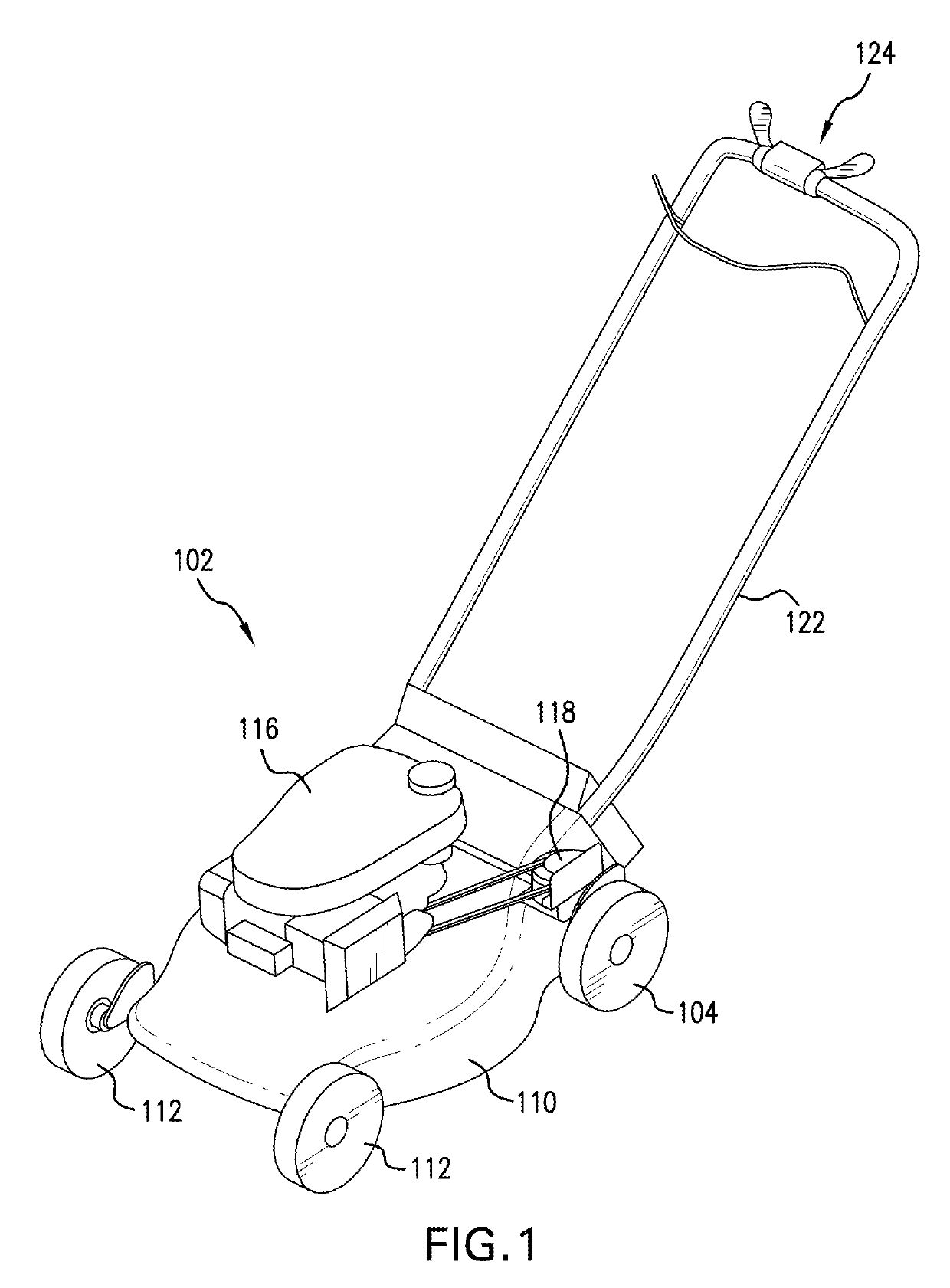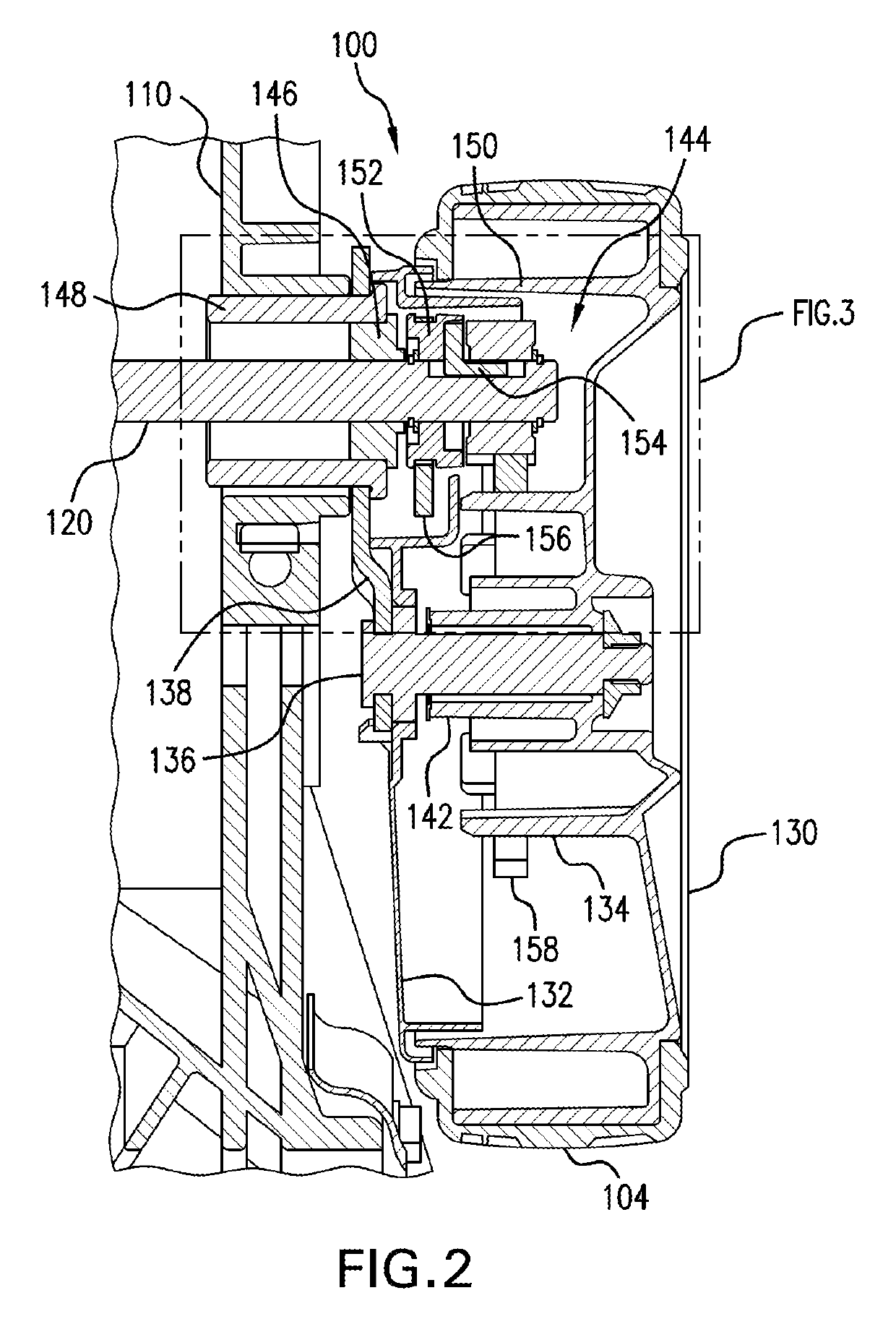Transmission for wheeled machine
a technology of transmission system and wheeled machine, which is applied in the direction of clutches, freewheel clutches, agriculture tools and machines, etc., can solve the problems of high roll-back friction that the user must overcome, high load on the design, and high customer complaints
- Summary
- Abstract
- Description
- Claims
- Application Information
AI Technical Summary
Benefits of technology
Problems solved by technology
Method used
Image
Examples
Embodiment Construction
[0018]It should, of course, be understood that the description and drawings herein are merely illustrative and that various modifications and changes can be made in the structures disclosed without departing from the present disclosure. Referring now to the drawings, wherein like numerals refer to like parts throughout the several views, the present disclosure relates to a transmission 100 for a manually operated wheeled machine 102 having a drive condition and a freewheeling condition. As used herein, the drive condition refers to a condition of the wheeled machine where the transmission 100 is in an engaged state and torque is transmitted to at least one drive wheel 104 of the wheeled machine 102, and the freewheeling condition refers to a condition of the wheeled machine where the transmission 100 is in a disengaged state and at least one drive wheel 104 can freely rotate in both forward and rearward directions. FIG. 1 shows the application of the transmission 100 to a self-prope...
PUM
 Login to View More
Login to View More Abstract
Description
Claims
Application Information
 Login to View More
Login to View More - R&D
- Intellectual Property
- Life Sciences
- Materials
- Tech Scout
- Unparalleled Data Quality
- Higher Quality Content
- 60% Fewer Hallucinations
Browse by: Latest US Patents, China's latest patents, Technical Efficacy Thesaurus, Application Domain, Technology Topic, Popular Technical Reports.
© 2025 PatSnap. All rights reserved.Legal|Privacy policy|Modern Slavery Act Transparency Statement|Sitemap|About US| Contact US: help@patsnap.com



